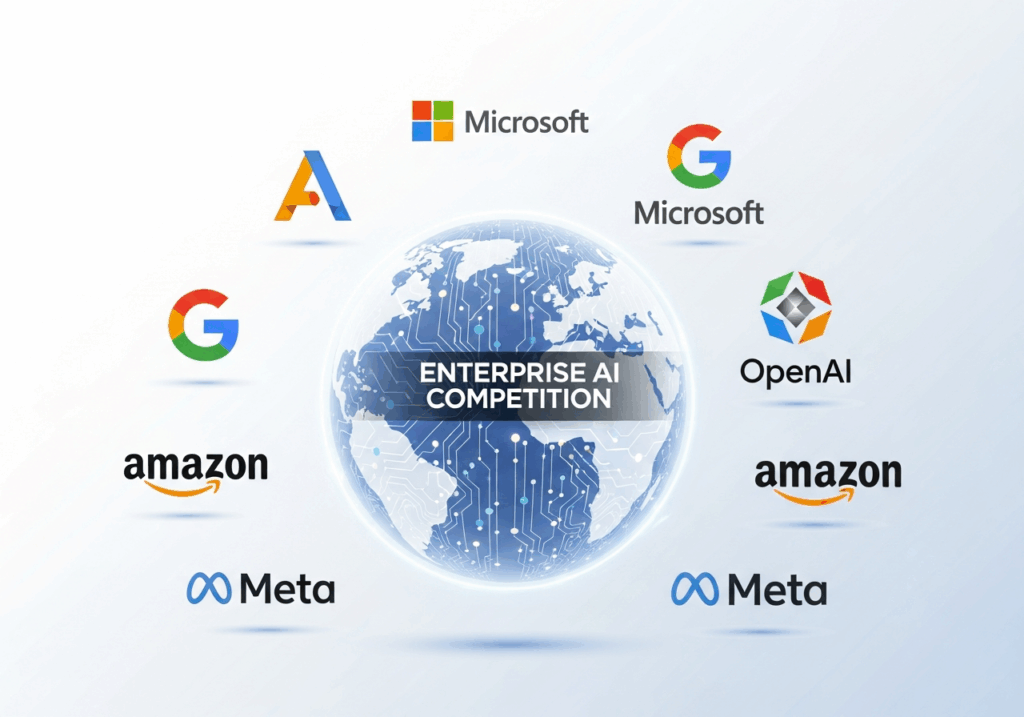In a bold move that reshapes the landscape of enterprise AI competition, Microsoft has officially formed its new Superintelligence Team under Mustafa Suleyman, CEO of Microsoft AI. The initiative, described by Microsoft as a push toward “humanist superintelligence,” represents one of the most significant structural reorganizations in the company’s AI strategy to date. This new division underscores the intensifying race between tech giants like Google, Amazon, and OpenAI to dominate the next generation of business-driven artificial intelligence.
1. Strategic Announcement: Microsoft’s Superintelligence Initiative

Microsoft’s creation of the MAI Superintelligence Team comes at a critical moment for the global technology sector. Led by Mustafa Suleyman—previously of DeepMind and Inflection AI—the new unit is focused on creating superhuman AI capabilities with a distinctly human-centric design philosophy. According to Microsoft, the team’s goal is to build “domain-specific superintelligence” that enhances fields like healthcare, materials science, and sustainability, rather than developing a generalized AGI.
The announcement follows a wave of AI infrastructure investments across Big Tech. Earlier this year, OpenAI’s $38 B AWS cloud partnership showcased the scale of computing resources required for AI model training and deployment. Microsoft’s superintelligence move positions Azure as the backbone for the next evolution in enterprise AI systems.
2. Competitive Response: How Microsoft Stacks Up Against Google, Amazon, and OpenAI
By establishing a formal Superintelligence division, Microsoft is sending a clear signal: it intends to lead in enterprise AI, not just participate. Google continues to advance its Gemini suite under DeepMind, while Amazon focuses on infrastructure-driven AI solutions through AWS. OpenAI remains a hybrid—both a partner and a potential competitor within Microsoft’s ecosystem. Meta, meanwhile, has launched its own superintelligence labs, escalating the corporate AI arms race.
This competition mirrors the global semiconductor and AI hardware struggle detailed in U.S. Nvidia chip export restrictions to China, which directly affect cloud providers’ access to high-end GPUs. Microsoft’s strategic advantage lies in owning both the software layer (Copilot, Dynamics 365) and cloud infrastructure (Azure) — a vertically integrated position that its competitors lack.
3. Enterprise Implications: AI Adoption and Pricing Power
For corporate buyers, Microsoft’s move marks a transition from generative AI toward enterprise-grade superintelligence. Executives are now evaluating AI vendors based on whether they can deliver superhuman performance in research, diagnostics, and decision automation.
Microsoft’s “humanist” approach also aims to reassure heavily regulated industries—like finance and healthcare—that superintelligence can be safe, auditable, and compliant. This framing may accelerate adoption compared to less-controlled competitors. The enterprise AI market, valued at approximately $217 billion by 2030 (IDC, 2025), will likely see Microsoft capturing a growing share of enterprise licensing revenue, especially as AI wellness technologies push personalization and health data analysis into mainstream business use.
Enterprise AI Market Data (2025)
- Global enterprise AI market: $217 billion by 2030 (IDC forecast).
- Compound annual growth rate (CAGR): ~23% from 2025 to 2030.
- Enterprise ROI improvements: 10–30% within 12 months of deployment.

4. Technology Focus: From Generative AI to Humanist Superintelligence
Unlike general AI systems designed for creative generation, Microsoft’s “superintelligence” targets deeper reasoning and predictive analytics across specific verticals. The company emphasizes controllability and alignment, aiming to prevent the unpredictable behavior associated with unconstrained AGI research.
This aligns with Microsoft’s ongoing investment in advanced semiconductor systems, as reflected in rising demand for Nvidia’s Blackwell-class AI chips. Superintelligence requires these advanced GPUs to process complex multi-modal data in real time—a necessity for enterprise-scale workloads in life sciences, logistics, and climate modeling.
5. Market Impact: Enterprise Software and Competitive Positioning
| Vendor | Enterprise Focus | Strategic Implication |
|---|---|---|
| Microsoft | Integrated cloud + AI stack; superintelligence vision | Leads enterprise bundling, drives premium pricing tiers |
| Google (Gemini) | Research depth + consumer integration | Must accelerate commercialization |
| Amazon (AWS AI) | Infrastructure-first enterprise AI | Pressure to expand into applications layer |
| OpenAI | Independent research + partner model | Strategic ambiguity within Microsoft alliance |
Microsoft’s positioning echoes broader enterprise AI trends—where platform control, GPU access, and integrated ecosystems define market leadership. This strategic direction complements other hardware breakthroughs such as Samsung’s thermal efficiency advances, which will support data center cooling and energy optimization in AI workloads.
6. Future Outlook: AI Industry Consolidation Ahead
Analysts forecast that enterprise AI will consolidate around a few dominant players with vertically integrated systems. Microsoft’s Superintelligence strategy positions it as a central platform for business AI adoption, enabling tighter integration between Azure cloud, Microsoft 365, and Copilot services.
Over the next 2–3 years, the company’s approach could shape how enterprise buyers evaluate AI vendors—not just by price or performance, but by alignment, compliance, and ethical impact on global industries. As organizations weigh superintelligence access and data governance, Microsoft’s “humanist” framing may become its strongest differentiator.
The future of enterprise AI will likely mirror the investment sentiment reflected in recent financial cycles, such as the AI stock correction and crypto market volatility. Both sectors reveal how investor psychology reacts to technological disruption—an important consideration for executives planning AI-driven transformations.
Related Insights
- OpenAI’s $38B AWS deal reshapes AI cloud competition
- Nvidia CEO reports surging demand for Blackwell AI chips
- AI stocks drive 75% of market returns—Is a bubble forming?
Microsoft’s Superintelligence Team marks not just an evolution in AI capabilities—but a clear strategic bet that the next decade of enterprise technology will be defined by cognitive scalability, ethical alignment, and business integration.